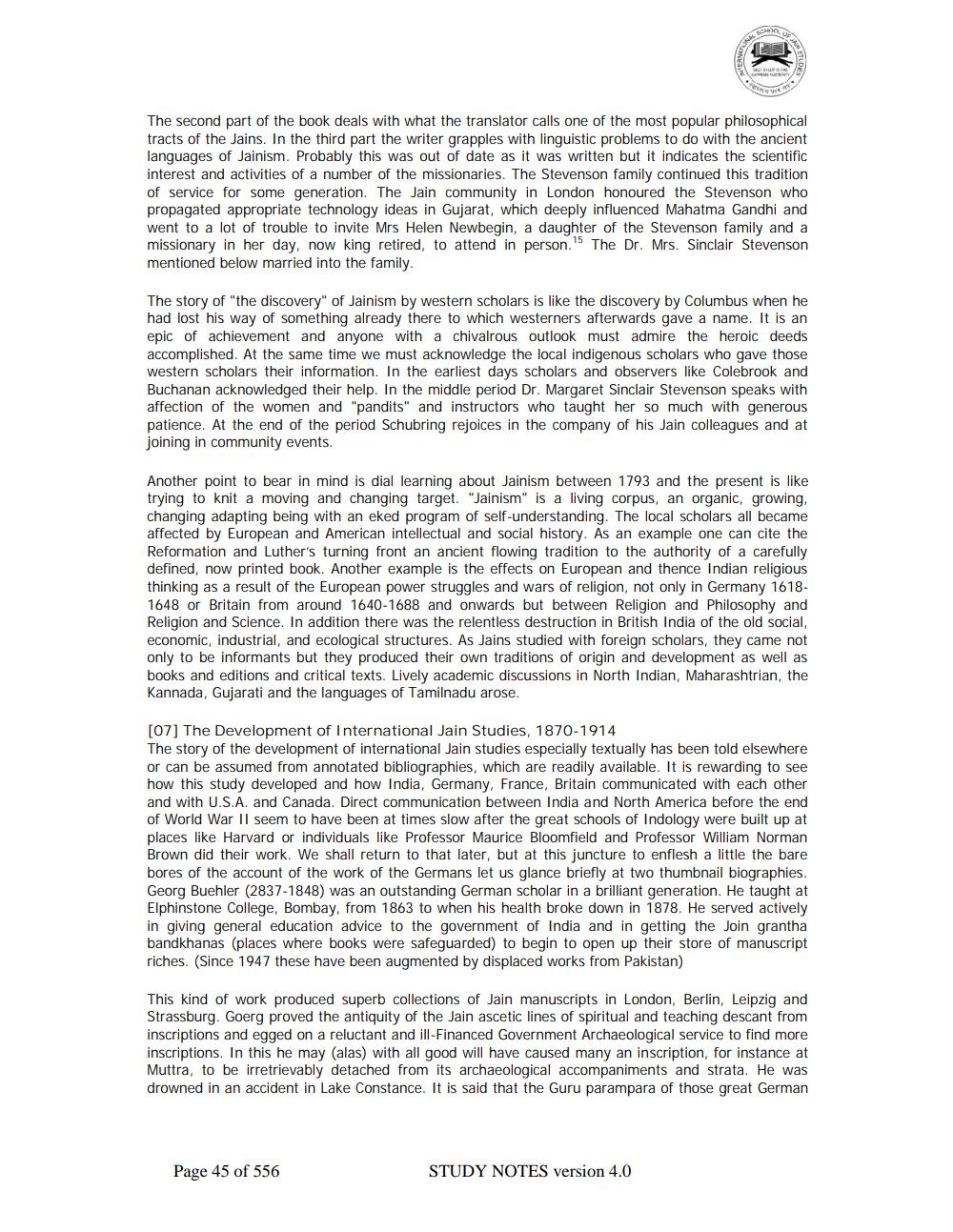________________
The second part of the book deals with what the translator calls one of the most popular philosophical tracts of the Jains. In the third part the writer grapples with linguistic problems to do with the ancient languages of Jainism. Probably this was out of date as it was written but it indicates the scientific interest and activities of a number of the missionaries. The Stevenson family continued this tradition of service for some generation. The Jain community in London honoured the Stevenson who propagated appropriate technology ideas in Gujarat, which deeply influenced Mahatma Gandhi and went to a lot of trouble to invite Mrs Helen Newbegin, a daughter of the Stevenson family and a missionary in her day, now king retired, to attend in person. 15 The Dr. Mrs. Sinclair Stevenson mentioned below married into the family.
The story of the discovery" of Jainism by western scholars is like the discovery by Columbus when he had lost his way of something already there to which westerners afterwards gave a name. It is an epic of achievement and anyone with a chivalrous outlook must admire the heroic deeds accomplished. At the same time we must acknowledge the local indigenous scholars who gave those western scholars their information. In the earliest days scholars and observers like Colebrook and Buchanan acknowledged their help. In the middle period Dr. Margaret Sinclair Stevenson speaks with affection of the women and "pandits" and instructors who taught her so much with generous patience. At the end of the period Schubring rejoices in the company of his Jain colleagues and at joining in community events.
Another point to bear in mind is dial learning about Jainism between 1793 and the present is like trying to knit a moving and changing target. "Jainism" is a living corpus, an organic, growing, changing adapting being with an eked program of self-understanding. The local scholars all became affected by European and American intellectual and social history. As an example one can cite the Reformation and Luther's turning front an ancient flowing tradition to the authority of a carefully defined, now printed book. Another example is the effects on European and thence Indian religious thinking as a result of the European power struggles and wars of religion, not only in Germany 16181648 or Britain from around 1640-1688 and onwards but between Religion and Philosophy and Religion and Science. In addition there was the relentless destruction in British India of the old social, economic, industrial, and ecological structures. As Jains studied with foreign scholars, they came not only to be informants but they produced their own traditions of origin and development as well as books and editions and critical texts. Lively academic discussions in North Indian, Maharashtrian, the Kannada, Gujarati and the languages of Tamilnadu arose.
[07] The Development of International Jain Studies, 1870-1914 The story of the development of international Jain studies especially textually has been told elsewhere or can be assumed from annotated bibliographies, which are readily available. It is rewarding to see how this study developed and how India, Germany, France, Britain communicated with each other and with U.S.A. and Canada. Direct communication between India and North America before the end of World War II seem to have been at times slow after the great schools of Indology were built up at places like Harvard or individuals like Professor Maurice Bloomfield and Professor William Norman Brown did their work. We shall return to that later, but at this juncture to enflesh a little the bare bores of the account of the work of the Germans let us glance briefly at two thumbnail biographies. Georg Buehler (2837-1848) was an outstanding German scholar in a brilliant generation. He taught at Elphinstone College, Bombay, from 1863 to when his health broke down in 1878. He served actively in giving general education advice to the government of India and in getting the Join grantha bandkhanas (places where books were safeguarded) to begin to open up their store of manuscript riches. (Since 1947 these have been augmented by displaced works from Pakistan)
This kind of work produced superb collections of Jain manuscripts in London, Berlin, Leipzig and Strassburg. Goerg proved the antiquity of the Jain ascetic lines of spiritual and teaching descant from inscriptions and egged on a reluctant and ill-Financed Government Archaeological service to find more inscriptions. In this he may (alas) with all good will have caused many an inscription, for instance at Muttra, to be irretrievably detached from its archaeological accompaniments and strata. He was drowned in an accident in Lake Constance. It is said that the Guru parampara of those great German
Page 45 of 556
STUDY NOTES version 4.0




